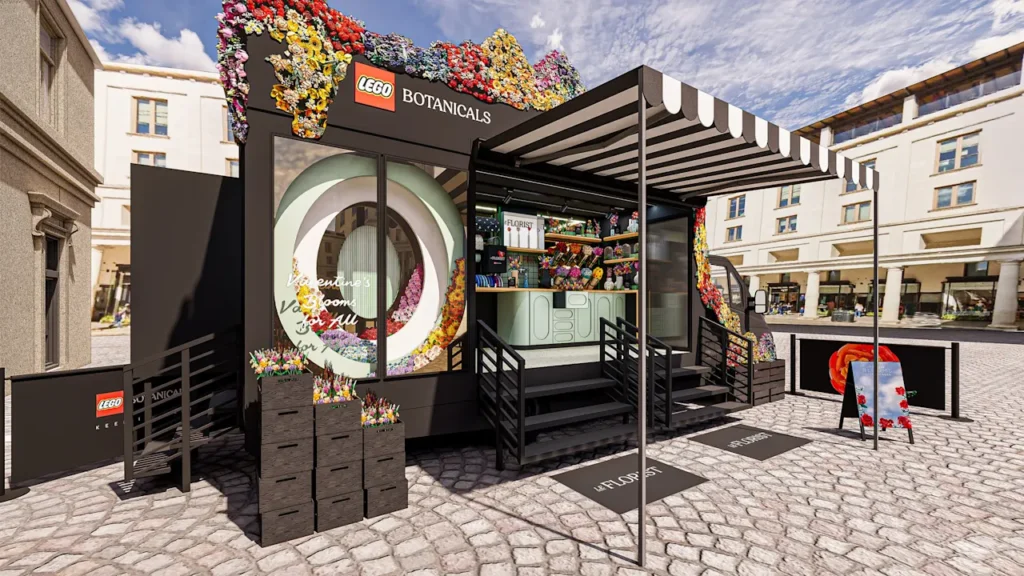In a world of endless pings, scrolls, and streams, digital burnout has become a modern malaise. Particularly for Gen Z, whose lives have played out almost entirely online, there’s now a growing hunger for something more grounded. In fact, 69% of 18–24-year-olds now shop in-store weekly—a striking shift back to the physical, the real, the tangible.
This isn’t a rejection of tech, but a rebalancing. For brands it’s a fundamental recalibration of what connection really means. It’s both a challenge and a golden opportunity to deliver a life-led response to digital fatigue, and to become facilitators of meaningful moments in people’s lives.
So, how can they do it? How can they create physical spaces that help people reconnect with themselves, with each other, and with the world around them?
Retail as a Remedy, Not Just a Transaction
It begins with a recognition that today’s consumers want more than shelves and sales. They want stories. Spaces that reflect their values, spark curiosity, and invite participation. Retail can no longer be passive—it must provoke.
This starts with intentional design. Sustainability isn’t a nice-to-have—it’s a nonnegotiable. From ethical materials to platforms that elevate underrepresented voices, physical stores are a powerful stage for a brand’s values to be seen and felt.
Think of Wingstop’s informal spaces for teenagers, or Rapha’s cycling clubhouses—places with a purpose, not just a product.
Community is the New Currency
People aren’t just buying things—they’re buying into tribes. And the most successful brands are those creating reasons for people to gather. From cooking classes to craft clubs, physical spaces can be reimagined as community hubs that foster identity and belonging.
The brief? Create spaces where people want to linger, learn, leave their phones alone for five minutes. Maybe even make a friend.
The Offline Club is showing what’s possible here. Already established in Amsterdam as a place to disconnect from electronic devices, the concept recently launched in London, and hundreds of people flocked to unwind, engage in creative activities, and form meaningful in-person connections without digital distractions.
Play as Protest, and Joy as Connection
The exact nature of that purpose or community varies by brands—and crucially should feel authentic to that brand. For some this will be about play. In uncertain times, play isn’t trivial—it’s transformative. From the Balloon Museum to ball pit bars, we’re seeing a resurgence of immersive, childlike wonder. But the best examples go deeper, using play to spark connection and creativity.
LEGO’s Botanical Truck Tour is a brilliant example—florist workshops on wheels, where people can build, share, and display their own Lego floral creations. It’s playful, meditative, and deeply social. A brand moment that’s not about screens—it’s about presence.
More brands could lean into joy as a design principle, and in doing so, they could create spaces that can’t be replicated on a screen.
Mindfulness, but Make it Matter
For others, the focus is on wellness. As with play, wellness can’t be bolted on—it has to be baked in. Today’s consumers are seeking brands that help them feel better, not just look better. That might mean sensory spaces, quiet zones, or experiences that invite reflection and presence.
Take HOKA’s “Run, Stop, Corner Shop”—a place for runners to recharge body and mind. Or imagine Urban Outfitters offering mental health workshops for Gen Z. It’s not about becoming a wellness brand—it’s about becoming a better human brand.
Post-Digital, Deeply Human
Yes, AI and AR are redefining experience. But the goal isn’t to dazzle—it’s to deepen. Virtual try-ons, AI beauty consultations, and frictionless checkout should exist not to replace people, but to enhance their time together.
Sides, a fried chicken brand by YouTube collective The Sidemen, does this beautifully. We designed interiors that feature LED tickers showing live social content, connecting digital community with real-life vibe. This is tech as connective tissue, not wallpaper.
The future of retail isn’t screen-free—it’s meaning-full. It’s about designing experiences that offer real reasons to return. Spaces that recharge us. Experiences that anchor us.
In the face of digital burnout, people aren’t running away from tech. They’re running towards connection—with themselves, their people, and the planet. The brands that respond with intention, imagination, and integrity? They’ll be the ones shaping not just what we buy, but how we live.

